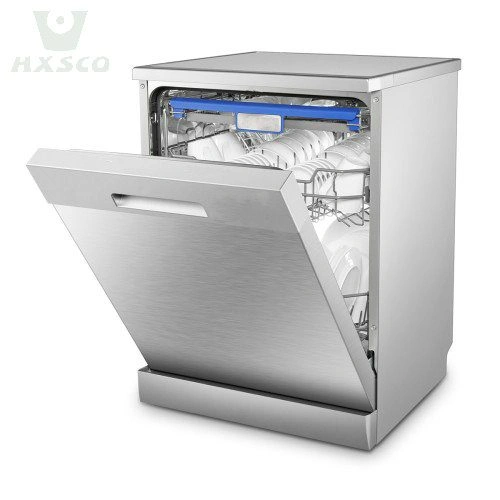At HXSCO, we take pride in our extensive experience and expertise as stainless steel suppliers, specializing in the export of various stainless steel grades. With a strong presence in Shanghai, China, we have built a reputation for delivering high-quality stainless steel products to clients worldwide. Our team consists of industry professionals who possess in-depth knowledge of stainless steel materials and their applications.
The purpose of this blog post is to provide a comprehensive and scientific overview of 430 Stainless Steel Coil. As one of the most widely used ferritic stainless steel grades, 430 Stainless Steel Coil offers a range of properties and applications that make it a sought-after material in numerous industries. By exploring its composition, characteristics, and applications, readers will gain a deeper understanding of this versatile stainless steel grade and its potential benefits for their projects.
Our aim is to offer valuable insights into the features and uses of 430 Stainless Steel Coil, empowering our readers to make informed decisions when selecting materials for their applications. By delving into the science behind this grade, we seek to enhance readers’ knowledge and equip them with the necessary information to confidently engage with stainless steel suppliers like HXSCO.
As we delve into the technical aspects of 430 Stainless Steel Coil, we will highlight its key properties, advantages, limitations, and applications. Additionally, we will address common questions and comparisons with other stainless steel grades, providing a well-rounded perspective on the subject.
Understanding 430 Stainless Steel Coil
Definition and Composition of 430 Stainless Steel Coil
430 Stainless Steel Coil is a ferritic stainless steel grade that belongs to the 400 series. It is composed of iron (Fe), chromium (Cr), and a small amount of carbon (C). The composition typically consists of approximately 16-18% chromium and less than 0.12% carbon. Manganese (Mn), silicon (Si), and other elements may also be present to enhance specific properties.
Key Properties and Characteristics
Corrosion Resistance
430 Stainless Steel Coil exhibits good corrosion resistance in mild environments, such as indoor applications. However, it is less resistant to corrosion compared to austenitic stainless steel grades like 304 and 316. To maintain its corrosion resistance, proper cleaning and maintenance practices are essential.
Heat Resistance
This grade offers moderate heat resistance and can withstand temperatures up to 815°C (1500°F). It is suitable for applications that do not require high-temperature resistance, such as kitchen appliances and automotive trim.
Magnetic Properties
One of the distinguishing features of 430 Stainless Steel Coil is its magnetic properties. It exhibits ferromagnetism, making it attractive for applications where magnetic response is desired, such as magnetic components and devices.
Strength and Durability
430 Stainless Steel Coil is known for its strength and durability. It possesses good mechanical properties, including high tensile strength and good formability. This makes it suitable for various applications where strength and structural integrity are crucial.
HXSCO understands the importance of these properties in different industries. By providing reliable and high-quality 430 Stainless Steel Coil, we enable our customers to achieve their desired outcomes.
Advantages And Limitations Of 430 Stainless Steel Coil
Advantages of using 430 Stainless Steel Coil
Cost-effectiveness:
430 Stainless Steel Coil is widely recognized for its cost-effectiveness. Compared to other stainless steel grades, it offers an attractive balance of desirable properties at a relatively lower price point. This makes it a popular choice for various applications where cost efficiency is a priority.
Easy maintenance and cleaning:
430 Stainless Steel Coil is known for its ease of maintenance and cleaning. It resists staining and retains its appearance with regular cleaning, making it ideal for applications where hygiene and aesthetics are important, such as kitchen appliances and food processing equipment.
Good formability:
430 Stainless Steel Coil exhibits excellent formability, allowing for easy shaping and bending during fabrication processes. This property makes it suitable for applications that require intricate designs or complex shapes.
Magnetic properties:
One notable advantage of 430 Stainless Steel Coil is its magnetic properties. It exhibits ferromagnetism, making it suitable for applications where magnetic response is desired, such as inductors, transformers, and magnetic components.
Limitations and Considerations
Lower corrosion resistance compared to some other stainless steel grades:
While 430 Stainless Steel Coil offers good resistance to general atmospheric corrosion, it is less resistant to corrosion compared to austenitic stainless steel grades like 304 and 316. It is important to consider the specific environmental conditions when selecting 430 Stainless Steel Coil to ensure its suitability for the intended application.
Temperature limitations:
430 Stainless Steel Coil has temperature limitations and is not recommended for applications involving prolonged exposure to high temperatures. Elevated temperatures can lead to scaling, reduced mechanical properties, and potential degradation of the material.
As one of reputable stainless steel suppliers, HXSCO understands the advantages and limitations of 430 Stainless Steel Coil. We provide high-quality coils and offer expert guidance in selecting the appropriate stainless steel grade for your specific needs.
With our cost-effective solutions, easy maintenance and cleaning properties, and comprehensive understanding of the limitations and considerations of 430 Stainless Steel Coil, HXSCO aims to be your trusted partner in fulfilling your stainless steel requirements.
Common Applications Of 430 Stainless Steel Coil
430 Stainless Steel Coil finds extensive usage across various industries and sectors due to its unique properties and cost-effectiveness. Some of the industries that commonly utilize 430 Stainless Steel Coil include:
Kitchen and Food Processing
The kitchen and food processing industry extensively employ 430 Stainless Steel Coil in the manufacturing of kitchen appliances, utensils, sinks, countertops, and food processing equipment. Its corrosion resistance, easy maintenance, and hygienic properties make it an excellent choice for these applications.
Automotive Industry
The automotive industry utilizes 430 Stainless Steel Coil for automotive trim, exhaust systems, decorative trims, and other components. Its durability, formability, and resistance to heat and oxidation make it suitable for automotive applications where aesthetics and functionality are crucial.
Architecture and Construction
In the architecture and construction sectors, 430 Stainless Steel Coil is used for architectural features, decorative elements, elevator interiors, handrails, and cladding. Its versatility, aesthetic appeal, and weather resistance make it a popular choice in these applications.
Specific Examples of Applications
Kitchen Appliances and Utensils
430 Stainless Steel Coil is widely employed in the production of kitchen appliances such as refrigerators, ovens, microwaves, dishwashers, and range hoods. It is also utilized in the manufacturing of various utensils, cookware, cutlery, and food processing equipment. The material’s corrosion resistance, heat resistance, and easy cleaning properties are particularly beneficial in these applications.
Automotive Trim and Components
The automotive industry utilizes 430 Stainless Steel Coil for various trim elements such as door handles, trims around windows, grilles, and exhaust tips. Its durability, corrosion resistance, and ability to withstand harsh weather conditions make it suitable for these exterior applications. Additionally, it is used in certain automotive components that require formability, strength, and cost-effectiveness.
Architectural and Decorative Purposes
430 Stainless Steel Coil is employed in architectural applications such as facades, decorative panels, handrails, and elevator interiors. Its aesthetic appeal, corrosion resistance, and low maintenance requirements make it a popular choice for enhancing the visual appeal of buildings and structures. It offers versatility in design and can be finished with various surface treatments to achieve desired aesthetics.

Comparisons With Other Stainless Steel Grades
Differences between 430 Stainless Steel Coil and Popular Grades like 304 and 316
Composition:
430 Stainless Steel Coil belongs to the ferritic stainless steel group, whereas grades like 304 and 316 are part of the austenitic stainless steel group. The composition of 430 Stainless Steel Coil typically includes 16-18% chromium and less than 0.12% carbon, while 304 contains 18-20% chromium and 8-10.5% nickel, and 316 contains 16-18% chromium, 10-14% nickel, and 2-3% molybdenum.
Corrosion Resistance:
Compared to 304 and 316, 430 Stainless Steel Coil offers lower corrosion resistance. While 304 and 316 grades are highly corrosion-resistant in various environments, including acidic and chloride-rich conditions, 430 Stainless Steel Coil is more susceptible to corrosion in aggressive environments.
Strength and Hardness:
430 Stainless Steel Coil exhibits higher strength and hardness compared to 304 and 316. It is a harder material, which makes it less ductile and more prone to cracking under certain conditions.
Heat Resistance:
304 and 316 grades have superior heat resistance compared to 430 Stainless Steel Coil. They can withstand high temperatures without significant loss in mechanical properties, while 430 Stainless Steel Coil has temperature limitations.
Choosing 430 Stainless Steel Coil based on Specific Requirements
Cost-Effectiveness:
430 Stainless Steel Coil is often chosen over grades like 304 and 316 due to its cost-effectiveness. If cost is a primary consideration and high corrosion resistance or elevated temperature capabilities are not crucial, 430 Stainless Steel Coil offers a more affordable solution.
Non-Critical Corrosion Resistance:
If the application is in a mild or non-aggressive environment where corrosion resistance requirements are lower, 430 Stainless Steel Coil can be a suitable choice. Examples include indoor applications or environments with minimal exposure to corrosive agents.
Magnetic Properties:
If magnetic response is desired, 430 Stainless Steel Coil’s ferromagnetic properties make it a preferred choice over non-magnetic grades like 304 and 316. Applications such as magnetic components, transformers, or inductor cores may benefit from this property.
Strength and Durability:
430 Stainless Steel Coil’s higher strength and hardness make it suitable for applications where strength and durability are crucial. It can withstand greater mechanical stress and is less prone to deformation, making it suitable for certain structural or load-bearing applications.
Trusted stainless steel suppliers, like HXSCO, understands the nuances of different stainless steel grades, including 430 Stainless Steel Coil. We can provide guidance in selecting the appropriate grade based on specific project requirements, considering factors such as cost, corrosion resistance, temperature limitations, and desired properties. With our comprehensive range of stainless steel products and expertise in the industry, HXSCO is committed to delivering high-quality stainless steel solutions to meet your diverse needs.
FAQ
430 Stainless Steel Coil is commonly used in various applications due to its unique properties. When considering its suitability for outdoor environments with high humidity, several factors need to be taken into account.
Corrosion Resistance:
430 Stainless Steel Coil exhibits moderate corrosion resistance. It is resistant to atmospheric corrosion and can withstand moisture to a certain extent. However, it is important to note that 430 Stainless Steel Coil has lower corrosion resistance compared to austenitic stainless steel grades like 304 and 316. Therefore, in outdoor environments with high humidity, the potential for corrosion may be higher, and additional protective measures may be necessary.
Surface Finish:
The surface finish of 430 Stainless Steel Coil plays a significant role in its performance in outdoor environments. A smooth and properly finished surface can enhance the material’s corrosion resistance and minimize the formation of crevices or areas susceptible to corrosion. Proper cleaning and maintenance are also essential to ensure the longevity of the stainless steel coil in high humidity conditions.
Protective Coatings:
To enhance the corrosion resistance of 430 Stainless Steel Coil in outdoor environments with high humidity, applying protective coatings can be beneficial. Coatings such as paints, lacquers, or specialized corrosion-resistant coatings can provide an additional barrier against moisture and humidity, reducing the risk of corrosion.
Maintenance:
Regular maintenance is crucial for stainless steel coils used in outdoor environments. Cleaning the surface regularly with mild detergents and ensuring any debris or contaminants are removed can help prevent corrosion. Additionally, periodic inspections can identify any signs of corrosion or damage, allowing for prompt repairs or replacements if necessary.
When considering the use of 430 Stainless Steel Coil in outdoor environments with high humidity, it is recommended to consult with stainless steel suppliers or industry experts. They can provide guidance on the specific grade, surface finish, and protective measures to ensure optimal performance and longevity.
HXSCO, as one of reputable stainless steel suppliers, can offer valuable expertise and provide high-quality 430 Stainless Steel Coil. Our team understands the considerations for different environments and can assist in selecting the appropriate stainless steel grade and offering recommendations for maintenance and protective measures.
In conclusion, while 430 Stainless Steel Coil can be used in outdoor environments with high humidity, it is important to consider its moderate corrosion resistance and take appropriate measures to protect the material from corrosion. Regular maintenance, surface finish optimization, and the application of protective coatings can help enhance its performance and longevity in such conditions.
Determining the price of 430 Stainless Steel Coil involves considering various factors, including raw material costs, production processes, market demand, and the specific grade’s availability. When comparing the price of 430 Stainless Steel Coil to other stainless steel grades, several key points should be taken into account:
Raw Material Costs:
The price of stainless steel coils, including 430 Stainless Steel Coil, is influenced by the cost of raw materials, primarily stainless steel scrap and alloying elements. 430 Stainless Steel Coil contains lower amounts of expensive alloying elements like nickel and molybdenum compared to grades like 304 and 316. Consequently, the raw material costs for producing 430 Stainless Steel Coil are generally lower, which can contribute to a more cost-effective price.
Production Processes:
The manufacturing processes involved in producing stainless steel coils can vary based on the specific grade and its properties. 430 Stainless Steel Coil is typically manufactured through processes such as hot rolling or cold rolling, which are generally less complex and require less energy compared to the production processes for austenitic grades like 304 and 316. The simplified production processes for 430 Stainless Steel Coil can contribute to lower production costs and, consequently, a competitive price.
Market Demand and Availability:
The market demand for different stainless steel grades can influence their respective prices. Grades like 304 and 316 are widely used and have a higher market demand due to their superior corrosion resistance and versatile applications. On the other hand, 430 Stainless Steel Coil, while offering desirable properties in certain applications, may have a relatively lower market demand. The availability and supply-demand dynamics of 430 Stainless Steel Coil can impact its price in comparison to other grades.
Specific Requirements:
The price of stainless steel coils can also vary based on specific requirements such as thickness, width, surface finish, and quantity. Customized specifications or specialized finishes may entail additional processing steps, which can affect the overall price. Stainless steel suppliers may offer different pricing tiers based on the specific requirements of the customer.
It is essential to consult with reputable stainless steel suppliers to obtain accurate and up-to-date pricing information for 430 Stainless Steel Coil. HXSCO can provide insights into market trends, availability, and pricing factors specific to the stainless steel industry.
HXSCO, as one of trusted stainless steel suppliers, understands the dynamics of pricing in the stainless steel market. We strive to offer competitive prices for 430 Stainless Steel Coil while maintaining high-quality standards. Our expertise in the industry enables us to provide accurate and transparent pricing information to meet the specific requirements of our customers.
In conclusion, the price of 430 Stainless Steel Coil is generally lower compared to grades like 304 and 316 due to factors such as lower raw material costs and simplified production processes. However, pricing can be influenced by market demand, availability, and specific requirements. Consulting reputable stainless steel suppliers is crucial to obtain accurate and competitive pricing information for 430 Stainless Steel Coil.
When considering the formability and shaping characteristics of 430 Stainless Steel Coil during fabrication, several factors come into play. Here, we will discuss the key considerations associated with forming and shaping this grade.
Work Hardening:
430 Stainless Steel Coil belongs to the ferritic stainless steel group, known for its higher strength and lower ductility compared to austenitic stainless steels. During the fabrication process, 430 Stainless Steel Coil undergoes work hardening, which can affect its formability. Work hardening refers to the increase in strength and hardness of the material when it is subjected to plastic deformation.
Bendability:
430 Stainless Steel Coil exhibits moderate bendability. It can be bent to a certain extent without cracking or failure, especially when the bend radii are larger. However, due to its higher strength and lower ductility, 430 Stainless Steel Coil is generally less formable than austenitic stainless steel grades like 304 and 316.
Cold Forming:
Cold forming processes such as bending, roll forming, and deep drawing can be employed to shape 430 Stainless Steel Coil. However, it is important to consider the limitations and potential challenges associated with these processes. The material’s work hardening behavior and lower ductility may require careful consideration of process parameters and tooling design to prevent cracking or excessive springback.
Annealing:
To improve the formability of 430 Stainless Steel Coil, annealing can be performed. Annealing involves heating the material to a specific temperature and then slowly cooling it to relieve internal stresses and increase ductility. Annealing can soften the material and make it more amenable to forming and shaping processes. Stainless steel suppliers can provide guidance on the appropriate annealing processes and parameters for 430 Stainless Steel Coil.
Springback:
Due to its higher strength and work hardening characteristics, 430 Stainless Steel Coil may exhibit more springback after forming compared to austenitic stainless steel grades. Springback refers to the tendency of the material to partially return to its original shape after being formed. To compensate for springback, adjustments can be made during the forming process, such as overbending or incorporating specialized tooling.
Machinability:
When machining operations are required during fabrication, it is important to note that 430 Stainless Steel Coil has lower machinability compared to some other stainless steel grades. The material’s higher hardness and work hardening behavior can result in increased tool wear and reduced machining speeds. Adequate cooling, lubrication, and appropriate tool selection can help optimize the machining process.
Stainless steel suppliers like HXSCO can provide valuable insights and guidance on the formability and shaping characteristics of 430 Stainless Steel Coil. With our expertise, we can recommend appropriate fabrication techniques, tooling considerations, and potential limitations associated with the grade.
In conclusion, 430 Stainless Steel Coil can be formed and shaped during fabrication, but its higher strength and lower ductility compared to austenitic stainless steels should be taken into account. Proper process selection, tooling design, and consideration of material limitations can ensure successful forming and shaping operations. Stainless steel suppliers play a crucial role in providing technical support and recommendations to achieve optimal results when working with 430 Stainless Steel Coil.
While 430 Stainless Steel Coil possesses unique properties and characteristics, there are alternative stainless steel grades that offer similar properties, making them potential substitutes in certain applications. Let’s explore some of these grades:
409 Stainless Steel Coil:
409 Stainless Steel Coil is a ferritic stainless steel grade that shares similarities with 430 Stainless Steel Coil. It offers good corrosion resistance, high-temperature resistance, and excellent weldability. Like 430 Stainless Steel Coil, it is cost-effective and commonly used in automotive exhaust systems, heat exchangers, and other applications requiring moderate corrosion resistance.
434 Stainless Steel Coil:
434 Stainless Steel Coil is another ferritic stainless steel grade with similar properties to 430 Stainless Steel Coil. It provides good corrosion resistance and high-temperature oxidation resistance. Additionally, 434 Stainless Steel Coil offers improved formability and weldability compared to 430 Stainless Steel Coil, making it suitable for applications in automotive trim, kitchen equipment, and architectural components.
439 Stainless Steel Coil:
439 Stainless Steel Coil is a ferritic stainless steel grade known for its excellent resistance to corrosion, particularly in high-temperature environments. It offers similar corrosion resistance to 304 and 316 stainless steel grades while being more cost-effective. 439 Stainless Steel Coil is often used in exhaust systems, catalytic converters, and other applications requiring heat and corrosion resistance.
441 Stainless Steel Coil:
441 Stainless Steel Coil is a ferritic stainless steel grade that combines good corrosion resistance with high-temperature strength and formability. It offers similar properties to 430 Stainless Steel Coil, with enhanced weldability and improved resistance to stress corrosion cracking. 441 Stainless Steel Coil is commonly used in exhaust systems, heat exchangers, and appliances.
18Cr-Cb Stainless Steel Coil:
18Cr-Cb Stainless Steel Coil, also known as Type 441, is a low-cost ferritic stainless steel grade. It provides good corrosion resistance, formability, and weldability. Similar to 430 Stainless Steel Coil, it is used in applications where moderate corrosion resistance is required, such as automotive trim, architectural components, and appliances.
When considering alternative stainless steel grades, it is essential to consult with reputable stainless steel suppliers who can provide detailed information on the specific properties, availability, and suitability of these grades for your application requirements. They can offer expert guidance on selecting the most appropriate stainless steel grade, considering factors such as corrosion resistance, mechanical properties, formability, and cost-effectiveness.
HXSCO, as a trusted stainless steel supplier, has a wide range of stainless steel grades available, including alternatives to 430 Stainless Steel Coil. Our knowledgeable team can provide valuable insights and assist you in selecting the right grade for your specific application needs, ensuring optimal performance and cost-efficiency.
In conclusion, several alternative stainless steel grades, such as 409, 434, 439, 441, and 18Cr-Cb, offer similar properties to 430 Stainless Steel Coil. These grades provide comparable corrosion resistance, formability, and cost-effectiveness, making them viable substitutes in various applications. Consulting reputable stainless steel suppliers is crucial in identifying the most suitable alternative grade based on specific requirements and considerations.
Conclusion
In this blog post, we have explored the various aspects of 430 Stainless Steel Coil, providing a comprehensive understanding of its properties, applications, comparisons with other grades, and fabrication considerations. Let’s recap the key points covered:
Definition and Composition:
430 Stainless Steel Coil is a ferritic stainless steel grade containing chromium as its primary alloying element, offering good corrosion resistance and high-temperature oxidation resistance.
Properties and Characteristics:
We discussed the key properties of 430 Stainless Steel Coil, including its corrosion resistance, heat resistance, magnetic properties, and strength and durability. These properties make it suitable for a wide range of applications.
Advantages and Limitations:
430 Stainless Steel Coil offers advantages such as cost-effectiveness, easy maintenance, and cleaning. However, it has lower corrosion resistance compared to some other stainless steel grades and temperature limitations that should be considered.
Common Applications:
We explored the diverse applications of 430 Stainless Steel Coil, including its usage in kitchen appliances and utensils, automotive trim and components, and architectural and decorative purposes.
Comparisons with Other Grades:
We highlighted the differences between 430 Stainless Steel Coil and popular grades like 304 and 316, helping readers understand when to choose 430 Stainless Steel Coil based on specific requirements.
Alternative Grades:
We discussed alternative stainless steel grades, such as 409, 434, 439, 441, and 18Cr-Cb, which offer similar properties to 430 Stainless Steel Coil, providing readers with options for their specific application needs.
HXSCO, as one of reliable stainless steel suppliers, has extensive expertise in 430 Stainless Steel Coil and other stainless steel grades. Our commitment to quality, customer satisfaction, and timely delivery sets us apart as a trusted partner in the industry.
If you have further inquiries, require technical assistance, or need personalized recommendations for your stainless steel requirements, we encourage you to reach out to HXSCO. Our experienced team is available to provide guidance, answer your questions, and ensure that you find the most suitable stainless steel solutions.
At HXSCO, we pride ourselves on being a reputable stainless steel supplier, offering high-quality products, competitive pricing, and exceptional customer service. Contact us today to discuss your stainless steel needs and experience the HXSCO difference.
Remember, when it comes to 430 Stainless Steel Coil and other stainless steel products, HXSCO is your trusted partner.




